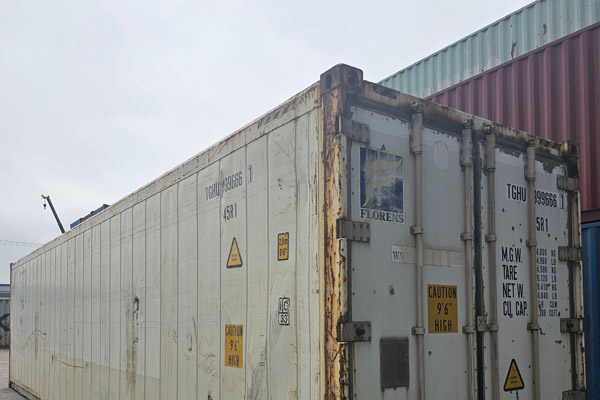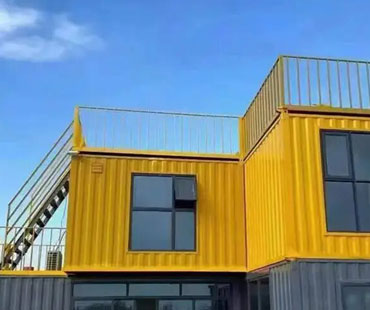In recent years, container architecture has emerged as a groundbreaking trend in the world of design and construction, transforming the way we think about living spaces. Combining functionality, sustainability, and aesthetic appeal, container homes and buildings offer a creative solution to the challenges of modern urban living. This article explores the principles of container architecture, its benefits, innovative design approaches, and the future of living in shipping containers.
The Concept of Container Architecture
Container architecture involves repurposing shipping containers into livable spaces, ranging from single-family homes to multi-story apartment complexes and commercial buildings. Originally designed for the transportation of goods across oceans, these steel boxes have found new life as innovative structures that challenge conventional architectural norms. The appeal of container architecture lies not only in its unique aesthetic but also in its potential for eco-friendly construction.
Sustainability at Its Core
One of the most significant advantages of container architecture is its sustainability. By reusing existing materials, container construction minimizes waste and reduces the environmental impact. Shipping containers are robust and durable, designed to withstand harsh conditions at sea, which makes them an ideal foundation for buildings. Moreover, container homes often incorporate energy-efficient features such as solar panels, green roofs, and rainwater harvesting systems, further enhancing their eco-friendliness.
Additionally, container architecture can address housing shortages in urban areas. By utilizing underutilized land and repurposing containers, architects can create affordable and efficient housing solutions. This innovative approach not only provides homes but also revitalizes neglected areas, contributing to urban regeneration.
Innovative Design Approaches
Container architecture is synonymous with creativity and innovation. Designers and architects are pushing the boundaries of what is possible with these structures. The modular nature of containers allows for flexible designs that can be easily modified or expanded. This adaptability makes container buildings suitable for a variety of purposes, from cozy homes to dynamic commercial spaces.
For instance, many architects embrace open floor plans, maximizing interior space and allowing for natural light to flood in through strategically placed windows. Interior design can be as varied as traditional homes, incorporating modern finishes, smart technology, and multifunctional furniture. The juxtaposition of industrial exteriors with warm, inviting interiors creates a unique living experience that appeals to a wide range of residents.
Case Studies: Inspiring Container Projects
Several notable projects around the globe showcase the potential of container architecture. The “Container City” in London is a pioneering example, featuring a community of container-based shops, studios, and homes. This project emphasizes the versatility of containers and their ability to foster vibrant urban communities.
In the United States, the “Pallet House” designed by Studio 1:1 is an innovative take on affordable housing, made entirely from repurposed shipping containers. This project highlights the potential for sustainable living while providing a comfortable and stylish home for its residents.
Another remarkable project is the “Kanye West Container House” in California, which combines luxury with sustainability. This high-end container home features modern amenities, open spaces, and breathtaking views, showcasing how container architecture can be elevated to a new level of sophistication.

Challenges and Considerations
While container architecture presents numerous benefits, it also comes with challenges. Building codes and zoning laws can pose obstacles to container construction, as many regulations are not designed with container homes in mind. Furthermore, insulating and weatherproofing containers is crucial to ensure comfort in various climates, which can add to construction costs.
Moreover, the perception of container homes as temporary or substandard housing can hinder their acceptance in some communities. Educating the public about the potential and quality of container architecture is essential for its broader adoption.
The Future of Container Living
As urbanization continues to rise and the demand for affordable housing increases, container architecture is poised to play a vital role in addressing these challenges. With advancements in design technology and a growing emphasis on sustainability, the future of container living looks promising.
Architects and designers will likely continue to innovate, creating increasingly sophisticated and functional spaces within shipping containers. As more people recognize the benefits of this architectural approach, container homes may become a mainstream solution for modern living.
Container architecture represents a fusion of innovative design, sustainability, and modern living. By reimagining shipping containers as livable spaces, architects are creating dynamic environments that meet the needs of today’s urban dwellers. As this trend continues to evolve, it holds the potential to reshape our cities and redefine our understanding of home in the 21st century. Embracing container architecture not only addresses pressing housing issues but also promotes a more sustainable and creative approach to living.


